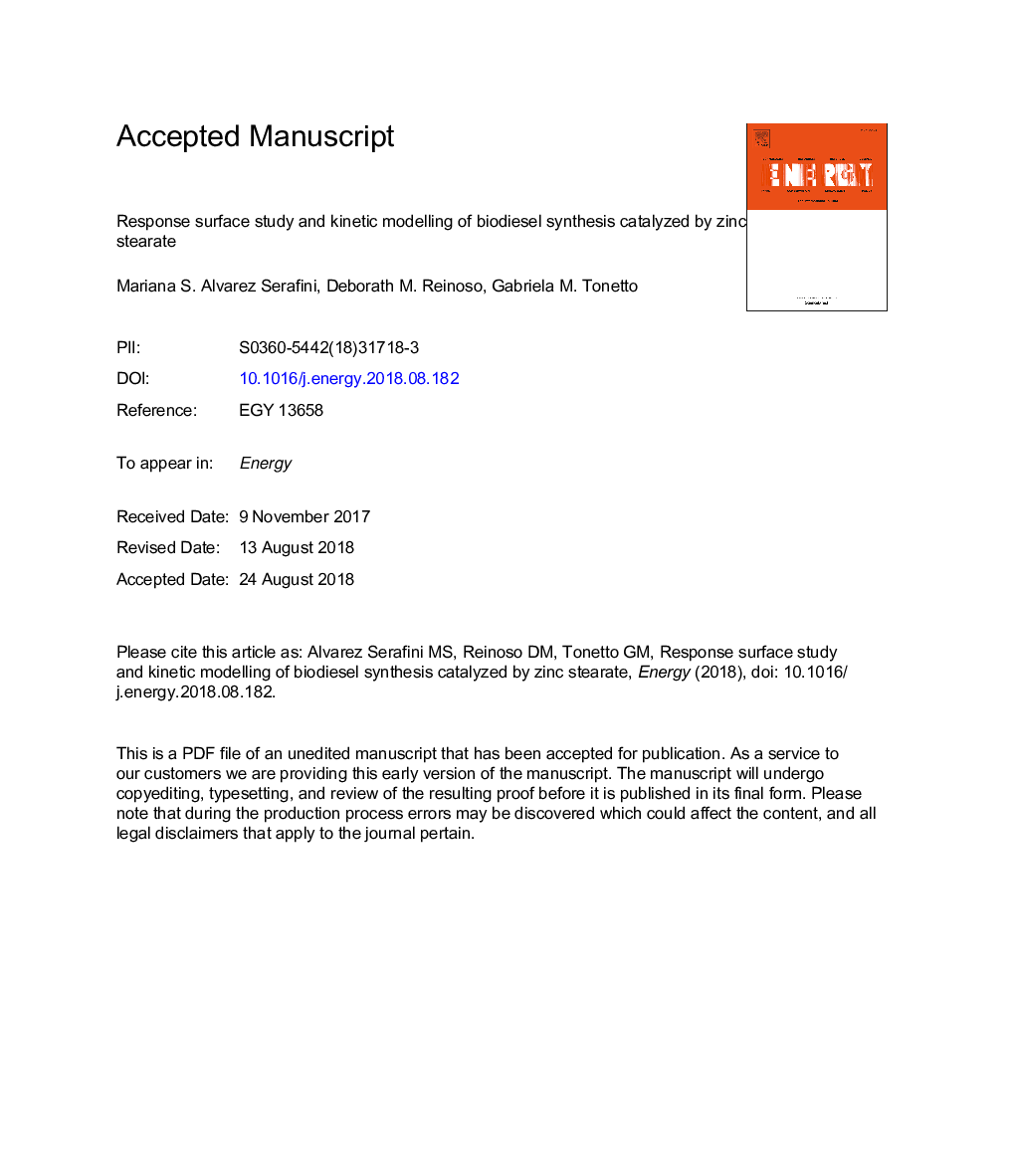| Article ID | Journal | Published Year | Pages | File Type |
|---|---|---|---|---|
| 8961673 | Energy | 2018 | 29 Pages |
Abstract
A kinetic study of the reaction was performed. Two models were proposed. Model 1 assumed a complete mixing of the dissolved catalyst with the reactants and a second-order mechanism for the forward and reverse reactions, where the reaction system could be described as pseudo-homogeneous and the catalyst was dissolved in the reaction medium. Model 2 supposed that the dissolved catalyst formed part of a macro emulsion, with mass transfer resistance in the boundary layer around the droplets. The kinetic constants were determined, and Model 2 showed a better fit to the experimental data. The model and the kinetic parameters allow to generate reaction operation strategies.
Related Topics
Physical Sciences and Engineering
Energy
Energy (General)
Authors
Mariana S. Alvarez Serafini, Deborath M. Reinoso, Gabriela M. Tonetto,
